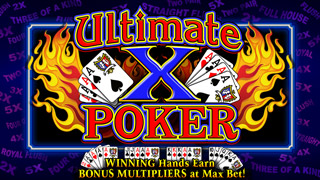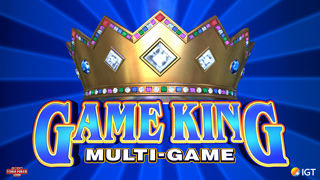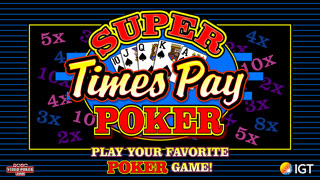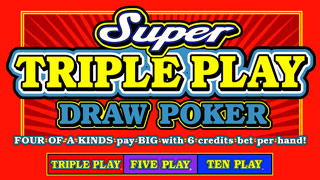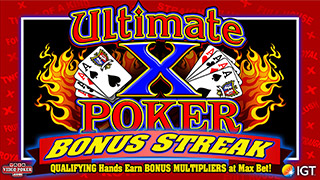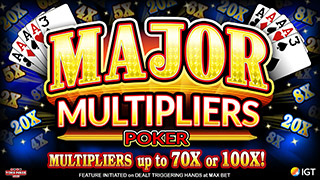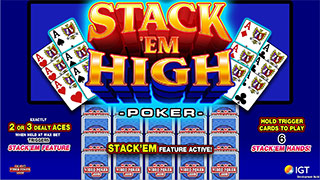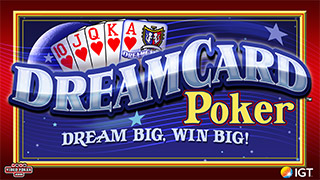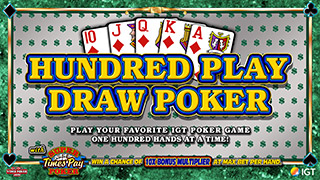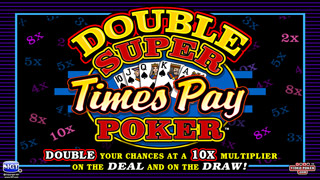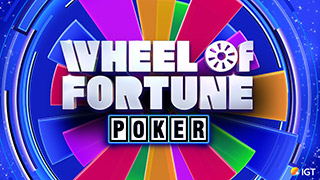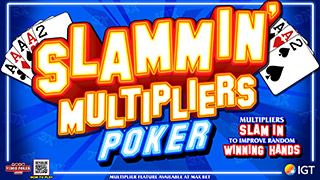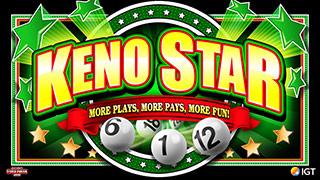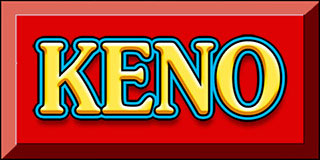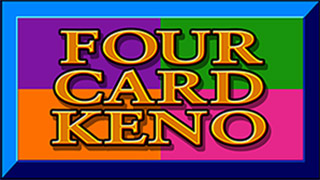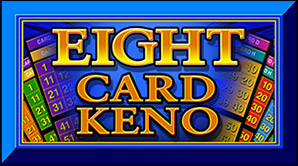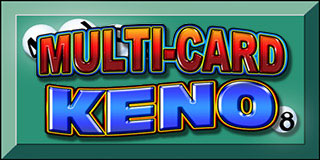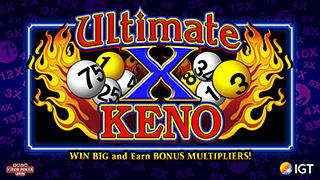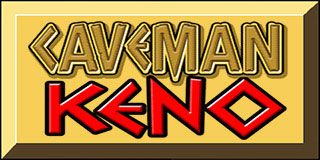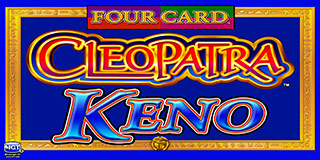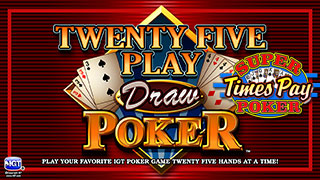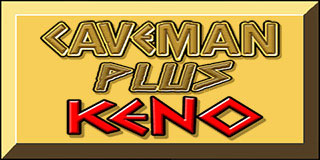Progressive VP as competition: should you "go for
-
Minn. Fatz
- VP Veteran
- Posts: 524
- Joined: Mon May 07, 2007 12:22 am
Progressive VP as competition: should you "go for
Reading the section in Linda Boyd’s Video Poker Edge on progressive jackpots (P.S. thanks for all the good info, Linda!) sparked some questions for me. VP.commers might find the answers interesting.
On most progressives the return of the "underlying game" (the return calculated excluding the Royal Flush jackpot) is less than the return on the full-pay version of the same game. This means that getting the "full" return from a progressive depends on you hitting the RF at some point.
Most, if not all, progressives are also linked in a bank of machines, so you rarely if ever play a progressive by yourself. If the progressive for the RF is high enough, there may be very few if any empty seats in the bank as more and more savvy players try for the bigger jackpot.
We advantage players know there are certain strategy changes depending on the value of the progressive that involve going for the RF in situations where we wouldn’t given only a "normal" jackpot. In those situations, the higher payoff for the progressive jackpot makes the expected value (EV) of chasing the RF higher than the EV of the "normal" strategy play. But given the fact that we are, at least in a sense, competing with the other players at the bank of progressive machines to hit the progressive jackpot, should we "go for it" in other situations?
I started with a few assumptions: a) You play one hand first, then everyone else at the bank of progressive machines (in any order) plays one hand, then you play the next hand, then your "opponents" all play the next hand, etc. b) All your opponents will draw to any one- to four-card RF, and may also draw a RF if they throw dealt rags (nine high or less, no pair, straight or flush draw). c) You will play only a certain length of time and then stop. d) You will stop playing at any time if either you (goodie!) or one of your opponents (rats!) hits the RF and resets the progressive, reducing the expected return of the game below 100 percent.
You should prefer drawing to a RF over a different draw with a higher EV if it is more likely that one of your opponents will draw to, and hit, a RF on their next hand than it is that you will receive another, better RF draw before one of your opponents hits a RF.
Running the numbers (see the accompanying table), I got the following results:
The probability of receiving at least one card to a RF (that is, at least one Ace through Ten) on any given hand is 92.25 percent.
A player drawing to every possible one- to four-card RF will make a RF, including RFs drawn after throwing initial rags, around once every 22,895 hands. This is about double the frequency for "normal" VP strategy.
However, the odds against being dealt two cards to a RF are only about 4 to 1, while the odds against being dealt three to a RF are only around 60 to 1.
# of cards to RF
initial hand probability
initial hand odds against (:1)
probability of filling RF draw
odds against filling RF draw (:1)
overall probability
overall odds against (:1)
rags
3.87847E-03
258
2.60767E-06
383485
1.01138E-08
98875151
1
0.65642
1.5
5.60650E-06
178365
3.68020E-06
271724
2
0.24910
4.0
6.16710E-05
16215
1.53620E-05
65096
3
1.66370E-02
60
9.25070E-04
1081
1.53910E-05
64973
4
3.61680E-04
2765
2.12770E-02
47
7.69540E-06
129948
5
1.53910E-06
649740
1
1
1.53910E-06
649740
TOTALS
0.92640
1.1
4.36778E-05
22895
So the short answer is that you shouldn’t go for a RF on a bank of progressive machines unless the level of the jackpot justifies it in terms of higher EV.
Even though 12 opponents all trying for the progressive jackpot reduce the odds against one of them hitting it before you play your next hand to around 1,900 to 1, and 20 opponents reduce those odds to around 1,145 to 1, you have considerably better odds of receiving at least a 2- or 3-card RF draw on your next hand than they do of hitting a RF before you draw again. (You should always draw one to a 4-card RF, which you will get about every 2,765 hands, in any case.) Thus, there seems to be no good reason to sacrifice even your reduced expected return in the progressive’s underlying game in an attempt to beat your opponents to the progressive payoff by drawing to possible RFs you would not draw to based on their EV.
Also, the last two assumptions above about the amount of time you will play turn out to be immaterial. Regardless of the size of your bankroll or the length of your session, the odds you will get a playable RF draw on your next hand are much better than the odds any of your opponents will hit a RF on their next hand, even if they draw to a RF every time they get any Ten through Ace. In addition, although an exact calculation is not attempted here, it is likely the return you will sacrifice from drawing to every possible RF will overcome any increased return from the progressive jackpot.
On most progressives the return of the "underlying game" (the return calculated excluding the Royal Flush jackpot) is less than the return on the full-pay version of the same game. This means that getting the "full" return from a progressive depends on you hitting the RF at some point.
Most, if not all, progressives are also linked in a bank of machines, so you rarely if ever play a progressive by yourself. If the progressive for the RF is high enough, there may be very few if any empty seats in the bank as more and more savvy players try for the bigger jackpot.
We advantage players know there are certain strategy changes depending on the value of the progressive that involve going for the RF in situations where we wouldn’t given only a "normal" jackpot. In those situations, the higher payoff for the progressive jackpot makes the expected value (EV) of chasing the RF higher than the EV of the "normal" strategy play. But given the fact that we are, at least in a sense, competing with the other players at the bank of progressive machines to hit the progressive jackpot, should we "go for it" in other situations?
I started with a few assumptions: a) You play one hand first, then everyone else at the bank of progressive machines (in any order) plays one hand, then you play the next hand, then your "opponents" all play the next hand, etc. b) All your opponents will draw to any one- to four-card RF, and may also draw a RF if they throw dealt rags (nine high or less, no pair, straight or flush draw). c) You will play only a certain length of time and then stop. d) You will stop playing at any time if either you (goodie!) or one of your opponents (rats!) hits the RF and resets the progressive, reducing the expected return of the game below 100 percent.
You should prefer drawing to a RF over a different draw with a higher EV if it is more likely that one of your opponents will draw to, and hit, a RF on their next hand than it is that you will receive another, better RF draw before one of your opponents hits a RF.
Running the numbers (see the accompanying table), I got the following results:
The probability of receiving at least one card to a RF (that is, at least one Ace through Ten) on any given hand is 92.25 percent.
A player drawing to every possible one- to four-card RF will make a RF, including RFs drawn after throwing initial rags, around once every 22,895 hands. This is about double the frequency for "normal" VP strategy.
However, the odds against being dealt two cards to a RF are only about 4 to 1, while the odds against being dealt three to a RF are only around 60 to 1.
# of cards to RF
initial hand probability
initial hand odds against (:1)
probability of filling RF draw
odds against filling RF draw (:1)
overall probability
overall odds against (:1)
rags
3.87847E-03
258
2.60767E-06
383485
1.01138E-08
98875151
1
0.65642
1.5
5.60650E-06
178365
3.68020E-06
271724
2
0.24910
4.0
6.16710E-05
16215
1.53620E-05
65096
3
1.66370E-02
60
9.25070E-04
1081
1.53910E-05
64973
4
3.61680E-04
2765
2.12770E-02
47
7.69540E-06
129948
5
1.53910E-06
649740
1
1
1.53910E-06
649740
TOTALS
0.92640
1.1
4.36778E-05
22895
So the short answer is that you shouldn’t go for a RF on a bank of progressive machines unless the level of the jackpot justifies it in terms of higher EV.
Even though 12 opponents all trying for the progressive jackpot reduce the odds against one of them hitting it before you play your next hand to around 1,900 to 1, and 20 opponents reduce those odds to around 1,145 to 1, you have considerably better odds of receiving at least a 2- or 3-card RF draw on your next hand than they do of hitting a RF before you draw again. (You should always draw one to a 4-card RF, which you will get about every 2,765 hands, in any case.) Thus, there seems to be no good reason to sacrifice even your reduced expected return in the progressive’s underlying game in an attempt to beat your opponents to the progressive payoff by drawing to possible RFs you would not draw to based on their EV.
Also, the last two assumptions above about the amount of time you will play turn out to be immaterial. Regardless of the size of your bankroll or the length of your session, the odds you will get a playable RF draw on your next hand are much better than the odds any of your opponents will hit a RF on their next hand, even if they draw to a RF every time they get any Ten through Ace. In addition, although an exact calculation is not attempted here, it is likely the return you will sacrifice from drawing to every possible RF will overcome any increased return from the progressive jackpot.
-
jm002546
- Senior Member
- Posts: 398
- Joined: Tue Oct 02, 2007 9:13 am
Reading the section in Linda Boyd’s Video Poker Edge on progressive jackpots (P.S. thanks for all the good info, Linda!) sparked some questions for me. VP.commers might find the answers interesting.
On most progressives the return of the "underlying game" (the return calculated excluding the Royal Flush jackpot) is less than the return on the full-pay version of the same game. This means that getting the "full" return from a progressive depends on you hitting the RF at some point.
Most, if not all, progressives are also linked in a bank of machines, so you rarely if ever play a progressive by yourself. If the progressive for the RF is high enough, there may be very few if any empty seats in the bank as more and more savvy players try for the bigger jackpot.
We advantage players know there are certain strategy changes depending on the value of the progressive that involve going for the RF in situations where we wouldn’t given only a "normal" jackpot. In those situations, the higher payoff for the progressive jackpot makes the expected value (EV) of chasing the RF higher than the EV of the "normal" strategy play. But given the fact that we are, at least in a sense, competing with the other players at the bank of progressive machines to hit the progressive jackpot, should we "go for it" in other situations?
I started with a few assumptions: a) You play one hand first, then everyone else at the bank of progressive machines (in any order) plays one hand, then you play the next hand, then your "opponents" all play the next hand, etc. b) All your opponents will draw to any one- to four-card RF, and may also draw a RF if they throw dealt rags (nine high or less, no pair, straight or flush draw). c) You will play only a certain length of time and then stop. d) You will stop playing at any time if either you (goodie!) or one of your opponents (rats!) hits the RF and resets the progressive, reducing the expected return of the game below 100 percent.
You should prefer drawing to a RF over a different draw with a higher EV if it is more likely that one of your opponents will draw to, and hit, a RF on their next hand than it is that you will receive another, better RF draw before one of your opponents hits a RF.
Running the numbers (see the accompanying table), I got the following results:
The probability of receiving at least one card to a RF (that is, at least one Ace through Ten) on any given hand is 92.25 percent.
A player drawing to every possible one- to four-card RF will make a RF, including RFs drawn after throwing initial rags, around once every 22,895 hands. This is about double the frequency for "normal" VP strategy.
However, the odds against being dealt two cards to a RF are only about 4 to 1, while the odds against being dealt three to a RF are only around 60 to 1.
# of cards to RF
initial hand probability
initial hand odds against (:1)
probability of filling RF draw
odds against filling RF draw (:1)
overall probability
overall odds against (:1)
rags
3.87847E-03
258
2.60767E-06
383485
1.01138E-08
98875151
1
0.65642
1.5
5.60650E-06
178365
3.68020E-06
271724
2
0.24910
4.0
6.16710E-05
16215
1.53620E-05
65096
3
1.66370E-02
60
9.25070E-04
1081
1.53910E-05
64973
4
3.61680E-04
2765
2.12770E-02
47
7.69540E-06
129948
5
1.53910E-06
649740
1
1
1.53910E-06
649740
TOTALS
0.92640
1.1
4.36778E-05
22895
So the short answer is that you shouldn’t go for a RF on a bank of progressive machines unless the level of the jackpot justifies it in terms of higher EV.
Even though 12 opponents all trying for the progressive jackpot reduce the odds against one of them hitting it before you play your next hand to around 1,900 to 1, and 20 opponents reduce those odds to around 1,145 to 1, you have considerably better odds of receiving at least a 2- or 3-card RF draw on your next hand than they do of hitting a RF before you draw again. (You should always draw one to a 4-card RF, which you will get about every 2,765 hands, in any case.) Thus, there seems to be no good reason to sacrifice even your reduced expected return in the progressive’s underlying game in an attempt to beat your opponents to the progressive payoff by drawing to possible RFs you would not draw to based on their EV.
Also, the last two assumptions above about the amount of time you will play turn out to be immaterial. Regardless of the size of your bankroll or the length of your session, the odds you will get a playable RF draw on your next hand are much better than the odds any of your opponents will hit a RF on their next hand, even if they draw to a RF every time they get any Ten through Ace. In addition, although an exact calculation is not attempted here, it is likely the return you will sacrifice from drawing to every possible RF will overcome any increased return from the progressive jackpot. I'm not exactly sure what you are trying to provide here, but I think you are overly complicating things. With a progressive you have an altered return from the base game. The value of the progressive at the exact instant of your draw determines your hold. The expected value of the game changes with every penny change of the progressive, as does your optimum strategy. The only way to play perfectly is to be playing alone.So long as the progressive is moving you are by definition constantly outdated on your strategy. My personal method is to compute the EV with no change in strategy and judge from there. If you have the experience to make small adjustments to play, that's great. I don't, and I tend to start expanding my RF draws, probably recklessly! I have to learn to stick to basic strategy. What the other players at the bank are doing is meaningless.
-
shadowman
- Video Poker Master
- Posts: 3587
- Joined: Mon Oct 23, 2006 5:42 pm
Most progresssive players compute strategy change points. That is, values of the progressive jackpots that require a major strategy shift. For example, when do you change from holding high pair and go for a KQJ suited. I keep a sheet that has these breakpoints in order, and as the progressive rises each breakpoint is reached sequentially. This makes it a little easier.
-
Eduardo
- Video Poker Master
- Posts: 2963
- Joined: Thu Aug 31, 2006 7:19 pm
Yes, I don't think your strategy would really change with every penny. It has to reach a certain point for a strategy change to happen. Your expected returns would change very slightly with any 10 or face card, but the change needs to reach a certain point before you need to make a different hold.I've never played on a progressive before but maybe I will on my trip next week. I don't know the different amounts where you should start holding for more royals but it would have to be a pretty huge pot for me to do something crazy. But I imagine there are a lot of subtle holds that change?
-
jm002546
- Senior Member
- Posts: 398
- Joined: Tue Oct 02, 2007 9:13 am
Yes, I don't think your strategy would really change with every penny. It has to reach a certain point for a strategy change to happen. Your expected returns would change very slightly with any 10 or face card, but the change needs to reach a certain point before you need to make a different hold.I've never played on a progressive before but maybe I will on my trip next week. I don't know the different amounts where you should start holding for more royals but it would have to be a pretty huge pot for me to do something crazy. But I imagine there are a lot of subtle holds that change?
I didn't actually mean the rules would change with every penny, but one penny MIGHT create a rule change. At some point you would trash 4 deuces and draw 5 to a royal playing deuces wild. Do you have that amount, Shadow?
-
shadowman
- Video Poker Master
- Posts: 3587
- Joined: Mon Oct 23, 2006 5:42 pm
Yes, but it is different for Ace high vs. King high. I don't have it handy but for .25 I think it's around $1345 and $1325 respectively for NSUD... a little higher for FPDW (since flush pays back less).
The technique I use for this is to use the analyze single hand facility of a software tutor. I set the RF payback to around $1500 and check the result for a dealt wild RF with 4 naturals. When I see it select the 4RF I reduce the RF amount and try again until I get close to where they pay back the same. Good old trial and error.
The technique I use for this is to use the analyze single hand facility of a software tutor. I set the RF payback to around $1500 and check the result for a dealt wild RF with 4 naturals. When I see it select the 4RF I reduce the RF amount and try again until I get close to where they pay back the same. Good old trial and error.
-
jm002546
- Senior Member
- Posts: 398
- Joined: Tue Oct 02, 2007 9:13 am
I meant that if the royal was high enough you would DISCARD 4 deuces and a trash card to draw 5 cards. You picked just a limited hand to test. That is not an entire strategy. For instance, when would you hold Ah suited?That might be more significant than the case you tested. Point is every hand has a different EV with every penny change in the progressive. That's for Eduardo to keep in mind.
-
shadowman
- Video Poker Master
- Posts: 3587
- Joined: Mon Oct 23, 2006 5:42 pm
I guess I misread your question because I've never seen a RF get that high and I doubt any ever would. I did give an example that one might see quite often and a technique that would allow anyone to compute tossing the 4 deuces, holding just an ace or any other possible hold.
-
Eduardo
- Video Poker Master
- Posts: 2963
- Joined: Thu Aug 31, 2006 7:19 pm
Toss 4 deuces for a shot at a royal? That would have to be one high progressive for me! I would rather take the 4 deuces and go for the royal .2 seconds later on the next deal (and have a draw to boot)
-
shadowman
- Video Poker Master
- Posts: 3587
- Joined: Mon Oct 23, 2006 5:42 pm
I think the RF would need to get around 5 million on a quarter machine. I don't think we will be faced with this decision in the near future.



